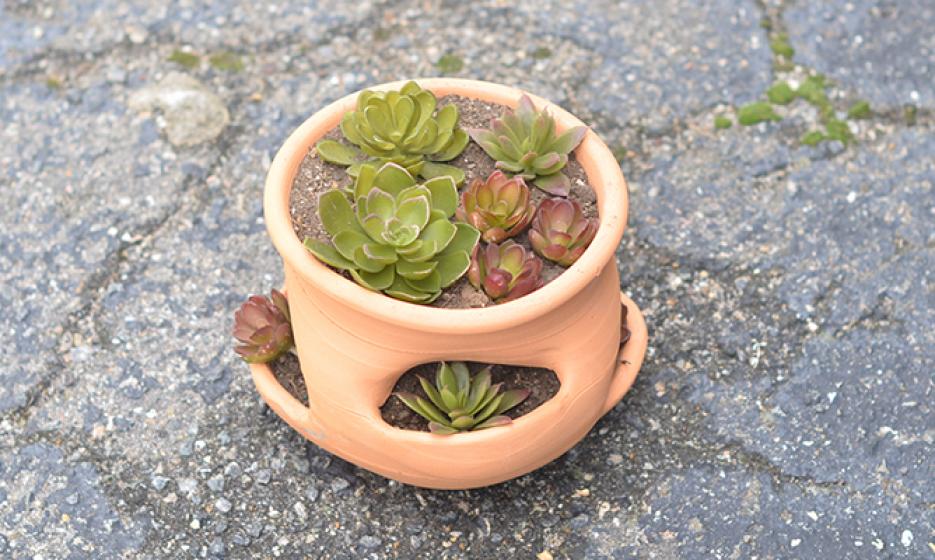DO-IT-YOURSELF SUCCULENT JAR
What plant is easy to grow, hard to kill and can be planted anywhere? Answer: Succulents.
You are probably familiar with one of the most famous succulent groups - Cacti or a cactus. They have thick, fleshy leaves that store water and are easy to grow, require bright sunlight and very little water - just like other succulents and sedums. We love all types of plants in this group, as they are possibly be one of the most versatile plants on the globe. They have shallow roots, can survive without a great deal of water and love not a lot of care. They can even thrive on drought like conditions. Succulents come in a variety of shapes, colors and sizes. And, look good in bloom or not. Try your hand at a succulent garden in a strawberry. Leave the natural terracotta or paint the pot to add interest. Let’s get started:
What You'll Need:
- Strawberry Jar
- Soil
- Assorted Succulents
- Paints and Brushes or other Decorative items
Assembly is easy and fun for all ages. Simply fill the strawberry jar up to the top with potting soil and then start planting your sedums and succulents in the holes. We recommend starting at the bottom and working your way up. Once all of the sides are planted, choose something for the top. Remember you don’t need to water often as succulents and sedums are drought tolerant.
Some of our Favorite Succulents & Sedums:
Lemon Coral Sedum - This attractive sedum forms a fine textured carpet of golden yellow. In the winter, the foliage may be a coral, reddish, orange color. It will add a fine texture and color and is a trailing plant to form a cascading drape over a pot.
Sempervivum (hens & chicks) - Hens & chicks are mat-forming succulents that produce clusters of rosettes. The parent rosettes are the “hens,” and the smaller rosettes that spring from them are the “chicks”. This low-growing perennial spreads quickly. Foliage can be red, green or some mixture thereof.
Sedum (stonecrop) - one of the most beautiful of all sedums with pink or rosy-red flowers produced abundantly in flat clusters; blooms open in late summer and remain in bloom several months.

